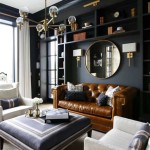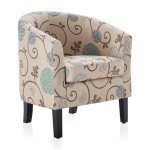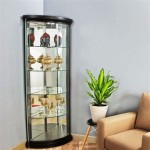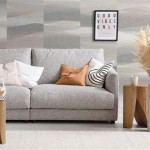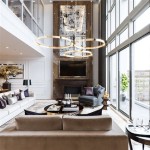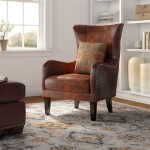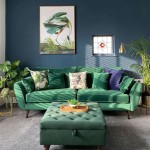Matching Lamps in Living Room: Achieving Harmony and Illumination
The selection and placement of lighting fixtures are crucial elements in interior design, significantly impacting the ambiance and functionality of a living room. Among the various lighting options, lamps play a vital role in providing both ambient and task lighting. The decision to use matching lamps in a living room setting often arises, prompting considerations of aesthetic balance and practical illumination.
Matching lamps, typically referring to two or more lamps of identical design, size, and finish, can contribute to a sense of visual coherence and symmetry within a living room. This approach is particularly effective in formal or traditional living room layouts, where a sense of order and formality is desired. Furthermore, matching lamps can be strategically deployed to emphasize specific focal points or architectural features within the room.
However, the decision to employ matching lamps should not be considered a universal solution. The suitability of this approach depends heavily on the overall design aesthetic, the room's dimensions, the available natural light, and the intended use of the space. Introducing variations in lamp styles and placement can add visual interest and a more personalized touch to the living room. It also can cater specific functional need in different area. This article will delve into the advantages and disadvantages of using matching lamps, explore various applications, and provide guidance on selecting the appropriate style and placement to achieve optimal results.
Enhancing Symmetry and Visual Balance
One of the primary advantages of using matching lamps is their ability to create a sense of symmetry and visual balance. This is especially pertinent in living rooms with a symmetrical layout, where furniture and accessories are intentionally arranged to mirror each other along a central axis. Placing matching lamps on either side of a sofa, fireplace, or console table reinforces this symmetry and contributes to a feeling of order and harmony.
The human eye is naturally drawn to symmetry, perceiving it as aesthetically pleasing and visually stable. By incorporating matching lamps, designers can capitalize on this innate preference, creating a living room that feels both inviting and well-composed. This approach is particularly effective in formal living rooms, where a sense of elegance and refinement is paramount. It can also be useful in creating a more casual, calm area, by contributing to a feeling of stability.
Furthermore, matching lamps can help to visually anchor a space and define its boundaries. When placed strategically, they can subtly delineate different zones within a larger living room, such as a reading area or a conversation space. The uniformity of the lamps helps to create a cohesive look, preventing the space from feeling disjointed or cluttered.
While symmetry can be desirable, it is important to avoid creating a space that feels overly rigid or predictable. To mitigate this risk, designers can introduce subtle variations in the accessories or artwork displayed alongside the matching lamps. For instance, using different-sized picture frames or incorporating a mix of textures and patterns can add visual interest and prevent the space from feeling too static.
Providing Consistent and Balanced Illumination
Beyond their aesthetic appeal, matching lamps also offer practical benefits in terms of illumination. By using lamps of identical wattage and design, homeowners can ensure a consistent and balanced distribution of light throughout the living room. This is particularly important in spaces where ambient lighting is insufficient or where specific tasks require targeted illumination.
Matching lamps can be strategically positioned to provide even lighting across a seating area, making it easier to read, converse, or engage in other activities. The consistent light output helps to reduce eye strain and creates a more comfortable and inviting atmosphere. This is especially beneficial in living rooms that are used for a variety of purposes, such as entertaining, relaxing, and working.
In addition to ambient lighting, matching lamps can also be used to provide task lighting for specific areas of the living room. For example, matching table lamps placed on either side of a sofa can provide focused light for reading, while matching floor lamps positioned near armchairs can offer illumination for crafts or hobbies. By providing both ambient and task lighting, matching lamps can enhance the functionality and versatility of the living room.
When selecting lamps for illumination purposes, it is important to consider the type of light bulb being used. LED bulbs are a popular choice due to their energy efficiency and long lifespan. However, it's important to choose a light bulb with the appropriate color temperature to create the desired ambiance. Warm-toned light bulbs (2700-3000K) are ideal for creating a cozy and inviting atmosphere, while cooler-toned light bulbs (3500-4100K) are better suited for tasks that require more focused illumination.
Considerations for Lamp Style and Placement
While matching lamps can offer numerous benefits, it is crucial to carefully consider the style and placement of the lamps to ensure they complement the overall design aesthetic of the living room. Selecting lamps that are consistent with the room's color palette, furniture style, and architectural details is essential for achieving a cohesive and visually appealing look.
For traditional living rooms, classic lamp styles such as candlestick lamps, urn lamps, or ginger jar lamps are often appropriate choices. These lamps typically feature ornate details, rich finishes, and elegant silhouettes. In contrast, modern living rooms often benefit from simpler, more streamlined lamp designs, such as minimalist table lamps, arc floor lamps, or geometric pendant lamps. These lamps tend to feature clean lines, neutral colors, and understated details.
The size and scale of the lamps should also be carefully considered in relation to the surrounding furniture and architectural features. Lamps that are too small can look insignificant and out of place, while lamps that are too large can overwhelm the space. As a general rule, the height of a table lamp should be approximately one-third of the height of the table on which it is placed. Similarly, the height of a floor lamp should be proportional to the height of the ceiling.
The placement of the lamps is equally important. Matching lamps should be positioned in a way that creates balance and symmetry without feeling contrived or forced. Consider the placement of other furniture and accessories in the room to ensure that the lamps are seamlessly integrated into the overall design. Avoid blocking walkways or creating visual clutter with the lamps. Instead, aim to create a harmonious and well-proportioned space that feels both inviting and functional. For instance, placing a matching pair of tall floor lamps behind a sofa can create a dramatic visual effect, while placing smaller table lamps on side tables can provide soft, ambient lighting.
Ultimately, the decision to use matching lamps in a living room is a matter of personal preference and design sensibility. While matching lamps can offer numerous benefits in terms of symmetry, balance, and illumination, it is important to carefully consider the specific needs and characteristics of the space. By selecting the appropriate style, size, and placement, homeowners can create a living room that is both aesthetically pleasing and functionally versatile.
Beyond the typical matching lamp pairs, another adaptation involves mixing and matching within a consistent style. For instance, two lamps could share the same base material (e.g., ceramic, metal) and general design aesthetic (e.g., mid-century modern, minimalist) but differ slightly in size, shade shape, or finish. This approach brings a touch of individuality while still maintaining a sense of cohesion.
When considering the use of matching lamps, it's essential to evaluate the existing light sources in the room. Is there ample natural light during the day? Are there built-in ceiling fixtures that provide sufficient ambient lighting? The answers to these questions will help determine the number, type, and placement of lamps needed to achieve optimal illumination. If the room is already well-lit, matching lamps may serve primarily as decorative accents, while in a darker room, they may play a more crucial role in providing essential light.
The shape of the lamp shade is another vital element to consider. Drum shades, empire shades, and coolie shades each offer a different aesthetic and disperse light in a unique way. When using matching lamps, it's typically best to use shades of the same shape and material to maintain consistency. However, subtle variations in shade color or trim can add a touch of individuality without disrupting the overall harmony.
The style of the lamps should also complement the hardware finishes in the room. If the living room features brushed nickel hardware, lamps with similar finishes would be a natural choice. Similarly, if the room has warm brass accents, lamps with brass or gold finishes could be used to tie the look together. Coordinating the lamp finishes with the other metal elements in the room helps to create a unified and polished aesthetic.
Finally, it's essential to consider the practical aspects of lamp placement and usage. Are the lamps easily accessible for turning on and off? Are the cords discreetly managed to avoid creating a cluttered look? Are the lamps positioned in a way that minimizes glare and maximizes functionality? Addressing these practical concerns will ensure that the matching lamps not only look good but also enhance the overall comfort and usability of the living room.

A Guide To Matching Floor Lamps In Your Living Room The Roomplace

When To Match Vs Mismatch Lamps In The Same Room Nadine Stay

How To Match Lamp Shades With Your Home Decor Mindful Hues

A Pair Of Matching Floor Lamps Do Or Don T Jones Design Co

Simple Details Pairs Of Floor Lamps

A Pair Of Matching Floor Lamps Do Or Don T Jones Design Co

Best Living Room Floor Lamps And Ideas On Where To Place Them Farmhousehub

Casual Conversation Living Room Transitional New Orleans By Kenneth Brown Design Houzz

360 Lighting Carter Beige And Cream 3 Piece Floor Table Lamp Set

Lavish Home Modern Table Lamps Set Of 2 Led Lighting For Living Room Bedroom Or Office Gold

